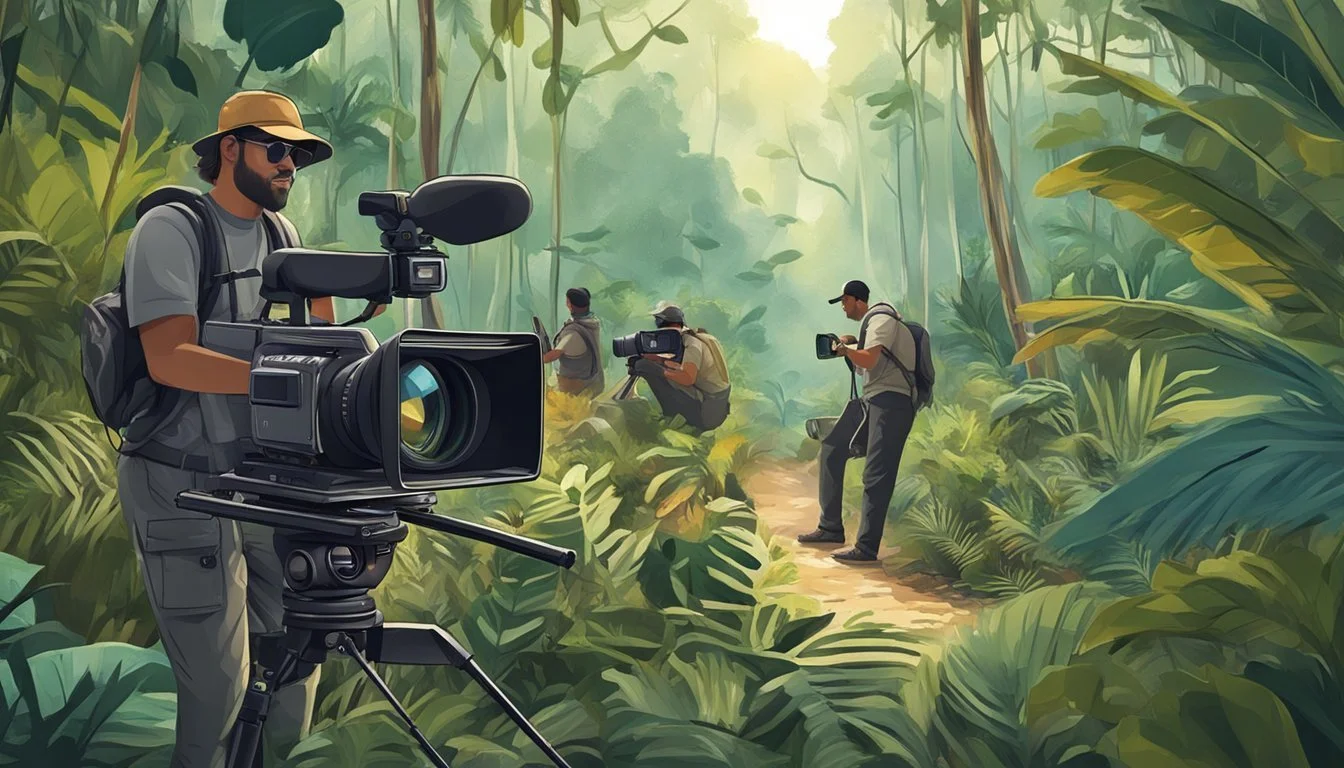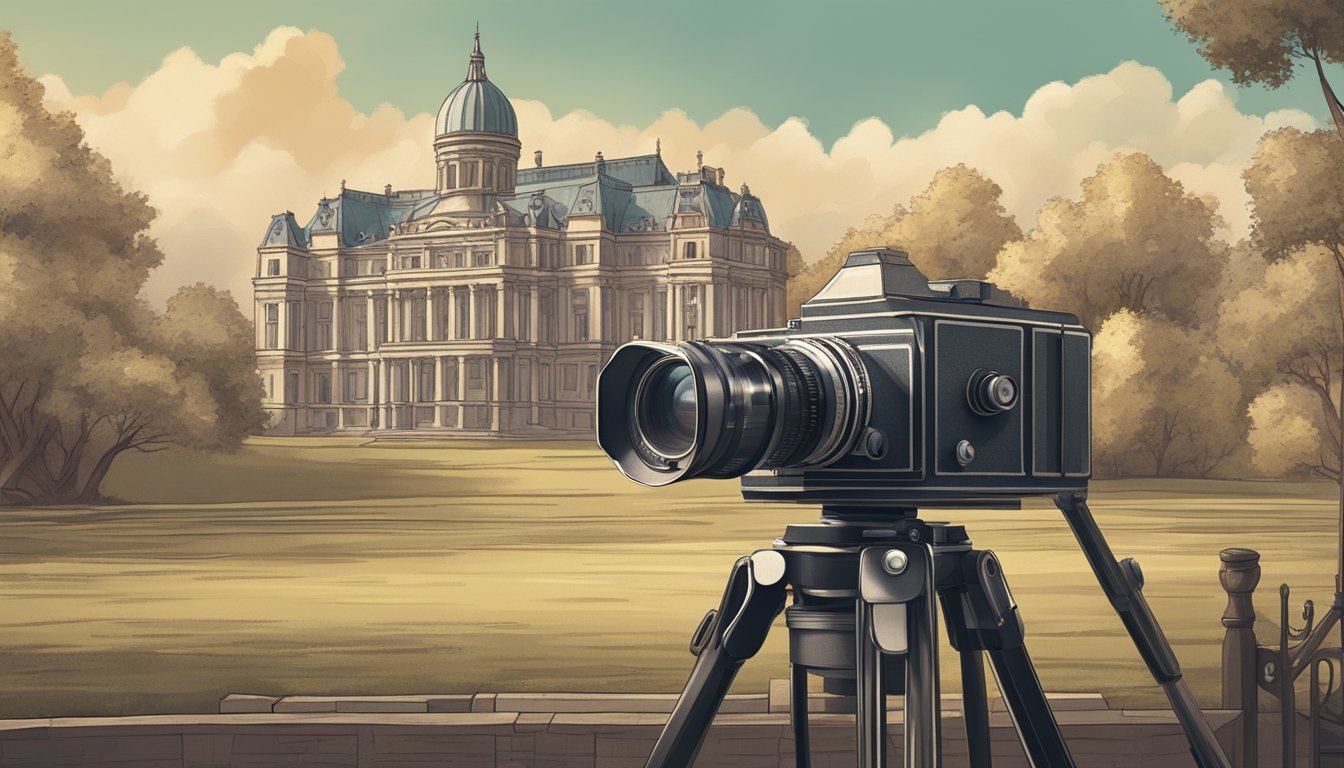Unlock the Truth: Why Documentary Movies Are the Must-Watch Films of Today!
Documentary films offer a window into real-life stories, events, and issues that shape our world. These non-fiction works captivate audiences by presenting unscripted narratives and authentic experiences. Documentary movies inform, inspire, and provoke thought by exploring subjects ranging from social justice to nature, history, and personal journeys.
Filmmakers employ various techniques to bring their subjects to life, including interviews, archival footage, and observational cinematography. The genre has evolved significantly since its early days, embracing new technologies and storytelling approaches. Today, documentaries tackle complex topics with creativity and nuance, often blurring the lines between journalism and art.
Streaming platforms have made documentaries more accessible than ever, offering viewers a vast selection of titles at their fingertips. This increased availability has contributed to a surge in popularity for the genre, with many documentaries gaining critical acclaim and sparking important conversations. From thought-provoking exposés to heartwarming tales of triumph, documentary films continue to educate and entertain audiences worldwide.
History of Documentary Films
Documentary films have evolved significantly since the early days of cinema, shaping our understanding of real-world events and issues. Technological advancements have played a crucial role in this evolution, expanding the possibilities for filmmakers.
Early Beginnings and Evolution
The roots of documentary filmmaking can be traced back to the late 19th century. Early pioneers captured snippets of real life, such as workers leaving factories or trains arriving at stations. These short films laid the groundwork for the documentary genre.
In the 1920s and 1930s, documentaries began to take on more structured forms. Filmmakers like Robert Flaherty and John Grierson emerged as influential figures, shaping the genre's development. Flaherty's "Nanook of the North" (1922) is often considered one of the first feature-length documentaries.
During World War II, documentaries played a significant role in informing and mobilizing the public. The genre continued to evolve in the post-war era, with new styles and approaches emerging.
Influence of Technology on Documentaries
Technological advancements have had a profound impact on documentary filmmaking. The introduction of lightweight 16mm cameras in the 1960s allowed for more mobile and intimate filming techniques. This led to the development of cinéma vérité and direct cinema styles.
The digital revolution in the late 20th century further transformed documentary production. Digital cameras and editing software made filmmaking more accessible and affordable. This democratization of tools led to an explosion of diverse voices and perspectives in documentary storytelling.
Today, streaming platforms have created new opportunities for documentary distribution and viewing. The genre continues to adapt and thrive, embracing innovative techniques like virtual reality and interactive storytelling.
Genres and Types of Documentaries
Documentaries span a wide range of subjects and styles, capturing real-life events, people, and issues. They inform, educate, and often provoke thought or action.
True-Crime Documentaries
True-crime documentaries delve into real criminal cases, offering in-depth explorations of investigations, trials, and their impact on society. These films often use interviews, archival footage, and reenactments to piece together complex narratives.
"The Friedmans" stands out as a notable example, examining a family torn apart by allegations of child abuse. It challenges viewers to question their assumptions about guilt and innocence.
True-crime documentaries frequently spark public interest in cold cases or highlight potential miscarriages of justice. They can lead to renewed investigations and sometimes even contribute to legal outcomes.
Social Justice and Civil Rights
Social justice documentaries shine a light on systemic inequalities and human rights issues. They often focus on marginalized communities and their struggles for equality and recognition.
"I Am Not Your Negro," based on James Baldwin's unfinished manuscript, explores the history of racism in the United States through Baldwin's personal experiences and observations. It connects the civil rights movement of the past to contemporary racial issues.
These films aim to educate viewers about social injustices and inspire action. They frequently incorporate historical footage, personal testimonies, and expert analysis to build compelling narratives.
Biographical Documentaries
Biographical documentaries, or "biopics," offer intimate portraits of notable individuals, from historical figures to contemporary personalities. They often combine interviews, archival footage, and personal artifacts to create a comprehensive view of their subjects' lives.
These films can reveal lesser-known aspects of public figures or shed new light on historical events through personal stories. They may cover an entire life span or focus on specific periods or achievements.
Biographical documentaries can be celebratory or critical, depending on their approach and the subject matter. They often provide context for understanding a person's impact on society, culture, or history.
Environmental and Wildlife Documentaries
Environmental documentaries tackle issues related to climate change, conservation, and the relationship between humans and nature. They often combine stunning visuals with scientific data to illustrate environmental challenges.
Wildlife documentaries showcase the beauty and complexity of the natural world. Advanced filming techniques allow for unprecedented views of animal behavior and habitats.
These films often serve as calls to action, raising awareness about endangered species, habitat loss, and the need for sustainable practices. They can influence public opinion and policy on environmental issues.
Rockumentary and Music-Themed Films
Rockumentaries, or music documentaries, offer behind-the-scenes looks at musicians, bands, and music genres. They often feature concert footage, interviews, and backstage moments to provide a comprehensive view of artists' lives and creative processes.
These films can chronicle the rise of new musical movements, explore the cultural impact of specific artists, or document iconic performances and tours. They often appeal to both dedicated fans and general music enthusiasts.
Rockumentaries can reveal the personal struggles and triumphs of musicians, offering insights into the music industry and the creative process behind hit songs and albums.
Political Exposés and Historical Accounts
Political documentaries investigate government policies, election processes, and political figures. They often uncover corruption, analyze power structures, and examine the impact of political decisions on society.
Historical documentaries revisit significant events or periods, offering new perspectives or uncovering little-known facts. They frequently combine expert interviews with archival footage to create comprehensive narratives.
These films can shape public understanding of complex political issues and historical events. They often challenge official narratives and encourage viewers to critically examine sources of information and power structures.
Documentary Filmmaking
Documentary filmmaking captures real-life stories and events through a creative lens. This process involves extensive planning, fieldwork, and post-production to bring compelling narratives to the screen.
Pre-Production and Research
Selecting a compelling topic is crucial in documentary filmmaking. Filmmakers must deeply research their subject matter, gathering facts and identifying key interview subjects. This phase also involves creating a shooting schedule and securing necessary permissions.
Budgeting plays a vital role in pre-production. Filmmakers need to allocate resources for equipment, travel, and crew. Storyboarding helps visualize the documentary's structure, while a thorough shot list ensures all necessary footage is captured.
Developing interview questions is essential for obtaining insightful responses. Filmmakers should prepare open-ended questions that encourage subjects to share their experiences and perspectives.
Challenges During Filming
Documentary filmmakers often face unpredictable situations in the field. Adapting to changing circumstances and maintaining flexibility is key to capturing authentic moments.
Technical challenges like lighting and sound can affect the quality of footage. Filmmakers must be prepared with backup equipment and problem-solving skills to overcome these obstacles.
Gaining trust from subjects is crucial for honest, revealing interviews. Building rapport takes time and patience, but results in more genuine on-camera interactions.
Weather conditions and location access can impact filming schedules. Having contingency plans and being resourceful helps keep production on track.
Post-Production and Editing
The editing process shapes the documentary's narrative. Filmmakers review hours of footage, selecting the most impactful moments to tell their story.
Creating a paper edit helps organize the film's structure before the actual cutting begins. This written outline serves as a blueprint for the final product.
Sound design and music enhance the emotional impact of visuals. Careful selection of audio elements can elevate the viewer's experience.
Fact-checking is crucial to maintain the documentary's integrity. Filmmakers must verify information and ensure accurate representation of events and subjects.
Color grading and visual effects can enhance the film's aesthetic. These finishing touches help create a cohesive look that supports the documentary's tone and message.
Key Documentary Filmmakers and Influences
Documentary filmmaking has been shaped by visionaries who pushed the boundaries of the medium. These influential directors have left an indelible mark on the genre through their innovative techniques and powerful storytelling.
Pioneers in Documentary Filmmaking
Robert Flaherty is often credited as the father of documentary film. His 1922 work "Nanook of the North" set early standards for the genre. Dziga Vertov revolutionized documentary techniques with his 1929 film "Man with a Movie Camera," introducing experimental editing and cinematography.
John Grierson coined the term "documentary" and established the National Film Board of Canada. His influence extended to filmmakers like Humphrey Jennings, who captured wartime Britain in poetic realism.
Frederick Wiseman's observational style redefined documentary in the 1960s. His films like "Titicut Follies" offered unvarnished looks at institutions without narration or interviews.
Innovative Voices in Modern Documentary
Errol Morris transformed the genre with his use of re-enactments and stylized interviews. His 1988 film "The Thin Blue Line" helped exonerate a man wrongly convicted of murder.
Werner Herzog's unique perspective blends fact and fiction, as seen in "Grizzly Man" and "Cave of Forgotten Dreams." His hypnotic narration and philosophical approach have inspired countless filmmakers.
Chris Marker's essay films like "Sans Soleil" blur the lines between documentary and art. His innovative use of still images in "La Jetée" influenced generations of directors.
James Marsh gained acclaim for "Man on Wire," chronicling Philippe Petit's high-wire walk between the Twin Towers. The film's dramatic reenactments and archival footage create a thrilling narrative.
Notable Documentary Films
Documentary films have the power to inform, inspire, and challenge viewers. They shed light on important issues and tell compelling true stories from around the world.
Culturally Impactful Documentaries
"13th" by Ava DuVernay examines racial inequality in the U.S. criminal justice system. It draws connections between slavery and modern mass incarceration of African Americans. The film sparked widespread discussions about systemic racism.
"I Am Not Your Negro" explores race relations in America through the writings of James Baldwin. Narrated by Samuel L. Jackson, it connects the Civil Rights movement to the present day Black Lives Matter movement.
"The Friedmans" delves into a complex family drama surrounding allegations of sexual abuse. It raises questions about memory, truth, and the American justice system.
Documentaries with Global Significance
"Flee" tells the story of an Afghan refugee through innovative animation. It provides a deeply personal look at the global refugee crisis and LGBTQ+ experiences in Afghanistan.
"Samsara" offers a breathtaking visual journey across 25 countries. Shot in 70mm film over nearly five years, it explores the connections between humanity and nature without dialogue.
"Amazing Stories" captures extraordinary true tales from around the world. Each episode highlights remarkable individuals and events that have shaped global culture and history.
Critically Acclaimed Documentaries
"Ayrton Senna" chronicles the life and career of the legendary Brazilian Formula One racing driver. It uses archival footage to create an intimate portrait of Senna's passion and skill on the track.
"Crumb" examines the life and work of underground comic artist Robert Crumb. The film offers a raw look at Crumb's unconventional artistry and complex family dynamics.
"The Act of Killing" confronts former Indonesian death squad leaders about their past. It uses unique filmmaking techniques to explore memory, guilt, and the lasting impact of violence.
The Rise of Streaming Platforms
Streaming platforms have revolutionized how audiences access and consume documentaries. These services offer unprecedented reach and convenience for both filmmakers and viewers.
Impact on Documentary Distribution
Streaming platforms have dramatically expanded the potential audience for documentaries. Filmmakers can now reach global viewers without relying on traditional theatrical distribution. This increased accessibility has led to a surge in documentary production and viewership.
Services like Amazon Prime Video and YouTube Movies allow independent creators to self-publish their work. This bypasses traditional gatekeepers, giving more diverse voices a platform. The on-demand nature of streaming also enables viewers to discover niche documentaries they might not encounter otherwise.
Streaming platforms' algorithms recommend content based on viewing habits. This helps documentaries find their target audience more effectively than conventional marketing methods.
Netflix as a Major Player
Netflix has emerged as a dominant force in the documentary landscape. The platform's extensive library includes a wide range of documentaries, from true crime series to nature films and political exposés.
Netflix invests heavily in original documentary content. Many of these Netflix Originals have garnered critical acclaim and prestigious awards. Titles like "Making a Murderer" and "The Social Dilemma" have sparked global conversations and cultural phenomena.
The platform's commitment to documentaries extends beyond feature-length films. Netflix produces documentary series and even ventures into interactive documentary experiences. This variety caters to different viewer preferences and attention spans.
Netflix's global reach allows documentaries to find international audiences quickly. This exposure can amplify a film's impact and influence on social issues or niche topics.
Challenges and Controversies
Documentary filmmaking faces complex ethical and legal issues. Filmmakers must navigate moral dilemmas while securing rights and permissions. These challenges shape the production process and final product.
Ethical Considerations in Documentary Filmmaking
Documentary directors grapple with portraying true stories accurately and ethically. When covering sensitive topics like genocide or the Ku Klux Klan, they must balance truth-telling with potential harm. Filmmakers risk re-traumatizing subjects or glorifying violence. Some use reenactments to depict events, raising questions about authenticity.
Obtaining informed consent is crucial, especially for vulnerable subjects. Directors must consider how their work impacts individuals and communities. The power dynamic between filmmaker and subject requires careful navigation.
Legal Hurdles and Rights Management
Securing rights and permissions presents major hurdles for documentarians. Filming in New York City or other locations often requires permits and releases. Using archival footage or music involves complex copyright negotiations.
When covering controversial topics like political assassinations, filmmakers may face legal threats or censorship attempts. Some countries ban documentaries deemed too provocative. Defamation lawsuits pose risks when exposing wrongdoing.
Privacy laws restrict what can be filmed in public spaces. Documentarians must obtain clearances for identifiable individuals. Rights management becomes particularly complex for international distribution.
Role of Documentaries in Education and Activism
Documentary films serve as powerful educational tools and catalysts for social change. They bring important issues to light and inspire viewers to take action on causes like social justice and disability rights.
Educational Documentaries in Schools
Documentary films enhance learning experiences in classrooms across grade levels. Teachers use these visual narratives to engage students with real-world topics and complex ideas. Films about historical events, scientific discoveries, and social movements provide context that textbooks alone cannot match.
Some schools incorporate documentary viewing and analysis into media literacy curricula. This helps students develop critical thinking skills and evaluate different perspectives. Educational documentaries also expose students to diverse voices and experiences, broadening their worldviews.
Popular titles used in schools include "March of the Penguins" for science classes and "The Civil War" series for history. These films spark classroom discussions and inspire further research on topics.
Activism Through Filmmaking
Documentary filmmakers often aim to raise awareness and motivate change around pressing social issues. Their work sheds light on injustice, amplifies marginalized voices, and challenges the status quo.
Films like "An Inconvenient Truth" brought climate change to the forefront of public discourse. "The Cove" spurred international action against dolphin hunting. "Blackfish" led to policy changes in marine parks.
Activist filmmakers use various techniques to engage viewers emotionally and intellectually. These include personal interviews, hidden camera footage, and data visualization. The goal is to present compelling evidence that moves people to act.
Some documentaries follow the journeys of individual activists. "He Named Me Malala" chronicles Malala Yousafzai's fight for girls' education. Such films inspire viewers by showcasing the impact one person can have.
The Future of Documentary Movies
Documentary filmmaking continues to evolve rapidly, embracing new technologies and storytelling techniques. The landscape is shifting towards more immersive experiences and innovative distribution methods.
Emerging Trends in Documentary Filmmaking
Digital platforms have revolutionized documentary distribution, allowing filmmakers to reach global audiences instantly. Streaming services now commission and showcase diverse documentary content, broadening the scope of stories told.
Short-form documentaries are gaining popularity, catering to audiences with shorter attention spans. These bite-sized films often tackle niche subjects or provide quick insights into complex issues.
Interactive documentaries are on the rise, enabling viewers to engage with content in non-linear ways. This format allows for a more personalized experience, letting audiences explore topics at their own pace.
Crowdfunding has become a viable option for independent documentarians, bypassing traditional funding models. This approach often results in more diverse and unconventional projects reaching fruition.
The Influence of Virtual Reality on Documentaries
Virtual reality (VR) is transforming the documentary landscape, offering unprecedented immersion. VR documentaries transport viewers directly into the story, creating powerful empathy-building experiences.
Filmmakers are experimenting with 360-degree video to capture environments in their entirety. This technique allows audiences to explore scenes from multiple angles, enhancing their understanding of the subject matter.
VR documentaries are particularly effective in addressing social issues, as they can simulate experiences of marginalized groups. This technology has the potential to drive social change by fostering deeper connections with viewers.
The integration of VR in documentaries poses new challenges for storytellers. They must balance narrative control with the viewer's freedom to explore, ensuring the core message remains clear and impactful.






